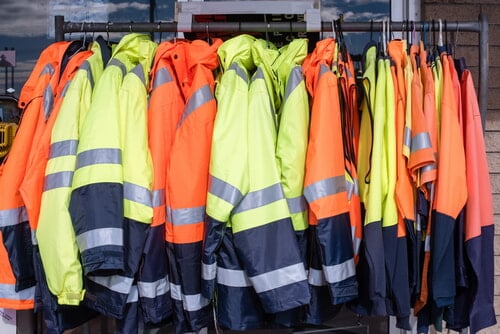Personal Protective Equipment

How to Choose the Right Safety Jacket for Your Job
Safety or high-visibility jackets are essential personal protective equipment (PPE) that provide visibility and protection in various work environments. Selecting the right safety jacket for your job is crucial for ensuring optimal safety and comfort. In this comprehensive guide, we will walk you through the factors to consider when choosing a safety jacket, helping you make an informed decision that meets the specific requirements of your job.
Understand Your Work Environment:
The first step in choosing the right safety jacket is understanding your work environment. Consider the specific hazards and conditions you will encounter. For example, construction sites may require jackets that protect against heavy rain, while road maintenance workers may need jackets with increased visibility features for working in low-light conditions.
Compliance with Safety Standards:
Ensure that your safety jacket meets the relevant safety standards and regulations for your industry or job. Safety jackets must adhere to specific standards in many countries, such as ANSI/ISEA 107, for high-visibility apparel. Look for jackets with appropriate certifications and markings indicating compliance with these standards.
Consider High-Visibility Features:
Safety jackets are designed to enhance visibility, so it’s essential to consider the high-visibility features. Look for jackets made from fluorescent materials in bright colors like neon yellow, lime green, or orange. Additionally, reflective tapes or strips on the jacket can significantly enhance visibility by reflecting light to its source, making you easily identifiable even in low-light or dark conditions.
Reflect on Climate and Weather Conditions:
Take into account the climate and weather conditions of your work environment. If you work in a cold climate, consider jackets with insulation or the option to layer underneath for warmth. In wet conditions, look for water-resistant or waterproof jackets to keep you dry. Ventilation features like breathable fabrics or underarm vents can benefit hot and humid environments.
Assess Durability and Longevity:
Choose a safety jacket that is durable and built to withstand the demands of your job. Look for jackets made from high-quality materials that are resistant to tears, abrasions, and general wear and tear. Reinforced stitching and sturdy zippers are also crucial for longevity. Assess the overall construction and materials of the jacket to ensure it can withstand the rigors of your work environment.
Consider Additional Safety Features:
Depending on your specific job requirements, consider additional safety features that may be relevant. For example, if you work in an environment with fire hazards, look for jackets with flame-resistant properties. If you work near moving machinery or in low-visibility areas, jackets with integrated safety harnesses or reflective patches on the back can provide an extra layer of safety.
Comfort and Fit:
A safety jacket should be comfortable to wear for extended periods. Look for jackets with adjustable cuffs, hems, and waistbands to achieve a proper fit. Consider features like a breathable lining, mesh panels, or vents to enhance airflow and prevent overheating. Opt for jackets with ample room for movement and freedom of motion, allowing you to perform your job tasks comfortably.
Easy Maintenance and Care:
Consider the ease of maintenance and care for the safety jacket. Look for jackets that are machine washable or easy to clean. Ensure the reflective tapes or strips are durable and do not degrade with repeated washing. Proper care and maintenance of your safety jacket will improve its longevity and effectiveness.
Conclusion:
Choosing the right safety jacket for your job is crucial for your workplace safety, visibility, and comfort. You can make an informed decision by considering factors such as your work environment, compliance with safety standards, high-visibility features, climate conditions, durability, additional safety features, comfort, and ease of maintenance. Remember that the right safety jacket should meet the specific requirements of your job while providing optimal protection and visibility. Investing in a high-quality safety jacket will ensure that you can confidently carry out your work tasks, knowing that you are adequately protected in any work environment.